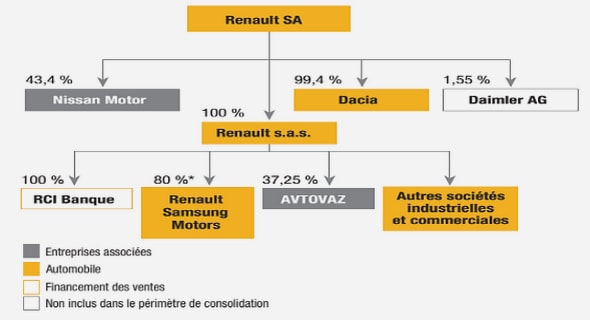Get Complete Project Material File(s) Now! »
Statutory requirements for hazard control
Sections 8 to 10 of the HSE Act describe the control techniques which are to be used to address any significant hazards which are identified. The hierarchy of control techniques is: Hazards to be eliminated (section 8), Hazards to be isolated (section 9) or Hazards to be minimised (section 10). The hazard control process outlined in the HSE Act is a process of elimination, isolation and minimisation, but can also be considered from the point of view of source, path and receiver (Figure 2). Dealing with the hazard at source includes elimination, substitution (for a lesser hazard) and isolation. Dealing with the path is also a form of isolation. Dilution 37 ventilation is a control method which is usually achievable by general workplace ventilation (open doors etc) without any more specific intervention. Where point sources of contamination are present, it is usual to apply local extract ventilation or LEV, which has to be designed for the particular source or contaminant. To be efficient it has to be adequately designed, usually involving flanges or a hood.
Implications of the gaps
Exposure to contaminated soil (from soil samples and from wind-blown dust) and solvents took place in the laboratory with the dermal absorption route being the most likely source of significant exposure to solvents, bearing in mind that, initially, the gloves provided were inadequate. The interior of the laboratory was exposed to the stack and reactors’ emissions (gases vapours and dust) from the plant as they were downwind (northeast) of the plant. After lab workers were provided respirators in July 2006, one experienced nausea due to the strong odour of plant emissions while inside the lab with the door open for ventilation. The worker later found out that the supplied respirator was too large, so a smaller size was provided. On another occasion, a worker is said to have been exposed to a great deal of dust while sweeping out the lab and was distressed that the respirator had failed to prevent this. The worker later found out that a dust filter had to be added to the respirator to prevent this problem.
Hazard monitoring: statutory requirements
If significant hazards cannot be eliminated or isolated but they are minimised, then section 10 of the Act requires the employer to take the actions under subsection 2. This includes the requirements to monitor the employees’ exposure to the hazard; to take all practicable steps to obtain the employees’ consent to the monitoring of their health in relation to the hazard; and with their informed consent, to monitor the employees’ health in relation to exposure to the hazard. Occupational health monitoring therefore requires the hazard itself to be measured by the appropriate method. In this case, as most of the hazards were airborne, this means sampling for the substance in question to ensure that the levels are within the occupational exposure standards set. This monitoring must reflect the exposure of the individual. It may also be appropriate, if certain conditions are met, (principally that all hazards have been identified and controls put in place) to monitor the levels of substances actually in the body of an exposed individual. Failing that, the effects of some substances can be detected by monitoring the health effects in the individual, for example liver function.
Rational (sic) for a 3 pump sampling strategy:
Characterization of the workplace environment is best done by sampling multiple locations on the same day. With multiple locations sampling a measure of an emitting source i.e. the reactor or screening operation can be made in conjunction with a measure of the personal work shift exposure of at risk employees. Conclusions can then be drawn as to the potential level of exposure, the actual recorded level of exposure and possible work practise modifications that could reduce exposure based on the sampling results and the detailed record of work activities during the sampling period. Single point sampling on separate days does not easily allow for this type of data interpretation. Instead, assumptions as to the homogeneity of the working environment over the different days have to be made and consequently any conclusions about work place exposure and work practises are much less robust. If multiple samples are attempted on the same day from a single sampling pump, sampling times are greatly reduced and consequently detection limits for the compounds in question may not reach the required standard for workplace exposure assessment.
CONTENTS :
- LIST OF TABLES AND FIGURES
- PREFACE
- BACKGROUND
- EXECUTIVE SUMMARY
- 1. HEALTH AND SAFETY MANAGEMENT AT THE FCC SITE
- General legal and regulatory requirements
- Planning, organising and managing workplace health and safety
- Specific guidelines for contaminated sites
- Hazard identification, assessment and control
- Statutory requirements for hazard control
- Hazard monitoring: statutory requirements
- Biological and health monitoring
- Results of health monitoring
- Information, supervision and employee involvement: statutory requirements
- Conclusion
- 3. OCCUPATIONAL MEDICINE INVESTIGATION
- Plant employees
- Laboratory working conditions
- Summary
- Recommendations to support workers
- 4. DEPARTMENT OF LABOUR INVESTIGATIONS
- Overview of department responsibilities
- On-site performance
- APPENDIX: TOXICOLOGY
- Organochlorine compounds
- Chlorophenoxyacetic acid herbicides, phenoxy herbicides
- Dioxins and related compounds
- Triazines and other related nitrogen-containing pesticides
- Metals
- Sulphur
- Organophosphorus compounds
- Summary of toxicology
GET THE COMPLETE PROJECT
A report on occupational health and safety at the Fruitgrowers Chemical Company remediation site, Mapua


